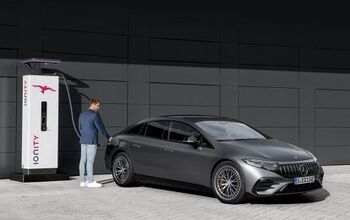Google Maps Finally Tracking Speed Limits, Speed Traps

The next time you use Google Maps to plan a road trip, you might notice some changes. Maps is now providing live updates on posted speed limits across the United States. Previously, this feature was only available in San Francisco. However, other parts of the country started seeing the feature crop up late last week as Google updated local servers.
This author saw changes on the app as early as January 18th. Travelling a bit too far from major metropolitan hubs or major highways has proven coverage has not yet gone nationwide. Google says it hopes to soon remedy that by implementing the service across the United States, United Kingdom, and select parts of mainland Europe. Of course, if you don’t want to wait, Waze (also owned by Google) has had this feature available for years, and remains the more robust navigation platform.
With the new speed limit feature, drivers using Google Maps will see the posted speed limit of the road they’re driving on appear in the lower left side of the app — regardless of if they’re using Android Auto or not. Speed traps are highlighted by a small camera icon and shown clearly on the map. AndroidPolice, which announced the update before Google had the chance, also cites reports that Maps will provide an audible warning for drivers approaching a speed trap, though we didn’t notice this while maintaining the posted limit and found the service to be rather inconsistent. The app may only warn you if it thinks you’re coming in too hot.
Google has been on a quiet quest to make Maps as good as Waze, so expect more shared features to debut over the coming months. As the easiest-to-use popular navigation interface, any updates to Google Maps are welcome. However, for those still looking to get the most up to date information about the surrounding area, Waze is likely to remain the superior tool for some time.
[Image: Google]

A staunch consumer advocate tracking industry trends and regulation. Before joining TTAC, Matt spent a decade working for marketing and research firms based in NYC. Clients included several of the world’s largest automakers, global tire brands, and aftermarket part suppliers. Dissatisfied with the corporate world and resentful of having to wear suits everyday, he pivoted to writing about cars. Since then, that man has become an ardent supporter of the right-to-repair movement, been interviewed on the auto industry by national radio broadcasts, driven more rental cars than anyone ever should, participated in amateur rallying events, and received the requisite minimum training as sanctioned by the SCCA. Handy with a wrench, Matt grew up surrounded by Detroit auto workers and managed to get a pizza delivery job before he was legally eligible. He later found himself driving box trucks through Manhattan, guaranteeing future sympathy for actual truckers. He continues to conduct research pertaining to the automotive sector as an independent contractor and has since moved back to his native Michigan, closer to where the cars are born. A contrarian, Matt claims to prefer understeer — stating that front and all-wheel drive vehicles cater best to his driving style.
More by Matt Posky
Latest Car Reviews
Read moreLatest Product Reviews
Read moreRecent Comments
- ToolGuy The other day I attempted to check the engine oil in one of my old embarrassing vehicles and I guess the red shop towel I used wasn't genuine Snap-on (lots of counterfeits floating around) plus my driveway isn't completely level and long story short, the engine seized 3 minutes later.No more used cars for me, and nothing but dealer service from here on in (the journalists were right).
- Doughboy Wow, Merc knocks it out of the park with their naming convention… again. /s
- Doughboy I’ve seen car bras before, but never car beards. ZZ Top would be proud.
- Bkojote Allright, actual person who knows trucks here, the article gets it a bit wrong.First off, the Maverick is not at all comparable to a Tacoma just because they're both Hybrids. Or lemme be blunt, the butch-est non-hybrid Maverick Tremor is suitable for 2/10 difficulty trails, a Trailhunter is for about 5/10 or maybe 6/10, just about the upper end of any stock vehicle you're buying from the factory. Aside from a Sasquatch Bronco or Rubicon Jeep Wrangler you're looking at something you're towing back if you want more capability (or perhaps something you /wish/ you were towing back.)Now, where the real world difference should play out is on the trail, where a lot of low speed crawling usually saps efficiency, especially when loaded to the gills. Real world MPG from a 4Runner is about 12-13mpg, So if this loaded-with-overlander-catalog Trailhunter is still pulling in the 20's - or even 18-19, that's a massive improvement.
- Lou_BC "That’s expensive for a midsize pickup" All of the "offroad" midsize trucks fall in that 65k USD range. The ZR2 is probably the cheapest ( without Bison option).


































Comments
Join the conversation
My rental car in England last September had this feature. It's incredibly handy when you're not a local.
Another Waze-ism is I've seen it get tripped up at a border crossing when there is more than one way to get across, like a bridge and a tunnel. When you get close it sometimes changes its mind a couple times or more. I'm still a fan though. Love the real time speed traps and other hazards.